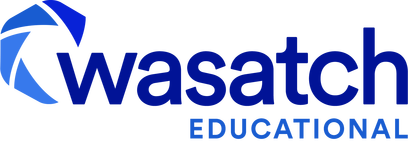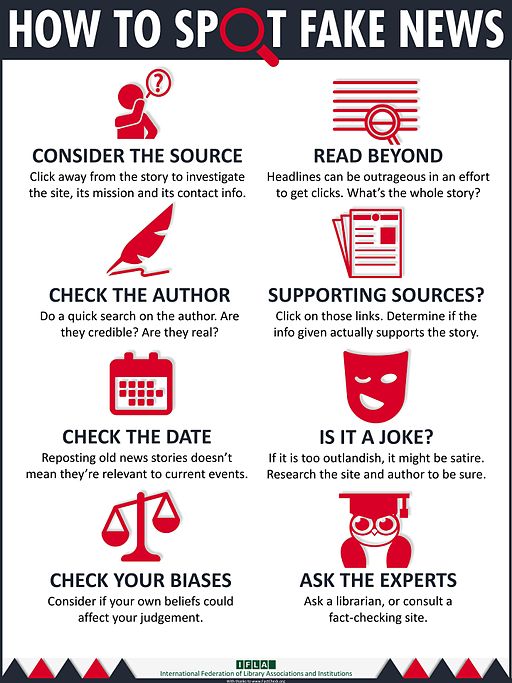|
Apiary's Shawn Lucas examines the hype around the weakening U.S. dollar and points out it is a long way from losing its global prominence. Read more.
0 Comments
Proposal Subject to Municipal Council Approval. Golf Course to Continue Offering all Services Wasatch Educational updated its proposal to the Provo Municipal Council to build and open a proposed medical education campus that will include the proposed Noorda College of Osteopathic Medicine and later the home of Rocky Mountain University of Health Professions on the North Wedge (northwestern) part of the East Bay Golf Course.
Following a December 5 public meeting regarding the topic, Mayor Michelle Kaufusi encouraged all parties to work together to find a potential solution, which they did. Wasatch Educational, Provo Parks and Recreation, Provo Economic Development, and East Bay Golf course refined the proposal to ensure a better balance between the development and the existing uses of the site. “As a group, we collaborated to develop consensus and agreement on the proposed medical school location,” said Dr. Richard Nielsen, vice president of Wasatch Educational and founding president of Rocky Mountain University of Health Professions. “We feel great about this updated proposal for the Provo Municipal Council’s consideration. For us, it has always been about working in good faith through the details, listening to the people of Provo, and working to create a solution where everyone benefits. We plan to be great neighbors with the East Bay Golf Course and all who play there including loyal golfers, local high school teams, parents, children and teens, and tournament participants.” “After listening to all sides regarding this proposal, I encouraged all the parties to work together on creating a solution that would be good for all involved that the Municipal Council could review and hopefully approve,” said Mayor Kaufusi. “I’m glad to see they have done just that. This proposal that will go before the Municipal Council for their consideration has the potential to be a wonderful outcome for our city, for future potential medical students, and for golfers who love and play at East Bay.” Under the proposal, Wasatch Educational will locate its proposed medical education campus, on approximately 21 acres of the northwestern portion of the East Bay Golf Course and a privately owned 7.8 acre parcel of land currently under contract. Additionally, the updated proposal includes the following items, all collaboratively agreed upon by Wasatch Educational, the Provo City Administration, the East Bay Golf Course, and Provo City Parks and Recreation:
“We voice our strongest possible support to these zoning recommendations,” said Nielsen. “We are grateful for the opportunity we’ve had to listen to the community and each of these city partners to make these recommendations to the Municipal Council and to the people of Provo.” The developers of the proposed medical education campus will pay for the relocation of the three current holes to the southeastern portion of the golf course. The new holes will be designed, relocated and playable before construction on the proposed medical education campus begins. “We feel this revised collaborative proposal provides the opportunity for a proposed medical education campus while giving the current users of the golf course assurances that their activities will not be adversely impacted,” said Scott Henderson, director, Provo City Parks and Recreation. It should be noted, all information related to this updated proposal is subject to approval by the Provo Municipal Council who contributed to the recommendations during the Dec. 5 public and Municipal Council meeting. A public open house is planned for Jan. 4, 2018 from 6:00 to 8:00 pm at the Provo Recreation Center and a public meeting is scheduled for Jan. 9, 2018 during the Municipal Council meeting. About Wasatch Educational Founded and located in Provo, Utah in 1998, Wasatch Educational is the holding company of Rocky Mountain University of Health Professions. Its mission is to promote and develop healthcare education institutions. Wasatch Educational will manage the development of the proposed Noorda College of Osteopathic Medicine. www.wasatcheducational.com The proposed Noorda College of Osteopathic Medicine would be an independent and freestanding institution overseen by a Governing Board located in Provo, Utah. Founded and located in Provo, Utah in 1998, Rocky Mountain University of Health Professions (RMUoHP), is a regionally accredited institution under the Northwest Commission on Colleges and Universities, an institutional accrediting body recognized by the Secretary of the U.S. Department of Education. This accreditation is the highest achievable in the United States. RMUoHP is nationally recognized for evidence-based, outcomes-oriented healthcare education. RMUoHP is an exclusive graduate healthcare education institution with a reputation for high-quality, rigorous healthcare education programs (currently 12 doctoral programs or doctoral tracks and four master’s degree programs in different healthcare specialties) and has a diverse student body and faculty with alumni from Utah and all 50 states. www.rmuohp.edu ### The term ‘yellow journalism’ started in the late 1800’s when two of the largest New York City newspaper publishers, Joseph Pulitzer and William Randolph Hearst, respectively began sensationalizing and creating fake news leading up to the Spanish-American war. Both publishers were infamous in their ability to twist the facts, leave out details and regularly make up news – all to sell more newspapers. Today, fed by social media, search engine optimization, bots, ego or one-sided agendas, we as a global society are faced with overwhelming and increasing numbers of so-called fake news – real looking false stories or blog posts written solely for sensationalistic impact and deception. Driven by technology that can spread fake news around the globe at unparalleled speed, hundreds of thousands and even multi-millions of people are consuming fake news either intentionally or unintentionally. No topic is immune from fake news, but in the final months of the last U.S. presidential election, fake news reached staggering new heights. According to a news analysis from BuzzFeedNEWS, “In the final three months of the US presidential campaign, the top-performing fake election news stories on Facebook generated more engagement than the top stories from major news outlets such as the New York Times, Washington Post, Huffington Post, NBC News, and others ….” The BuzzFeedNEWS analysis went on to say that the “20 top-performing false election stories … generated 8,711,000 shares, reactions, and comments on Facebook.” Compared to 7,367,000 of “the 20 best-performing election stories from 19 major news websites.” One of the most important aspects of news consumption is to think and act like a fact checker. Sourcing Mike Caulfield, director of blended and networked learning at Washington State University in Vancouver, NPR says, “…Fact-checkers read laterally – moving quickly away from the original text, opening up a series of tabs in a browser to judge the credibility of its author and the sources it cites.” With so much fake news available, the begging question is how to see through it all? Here are five ways to get to the truth compiled by several sources:
It is clear media outlets such as Facebook and Twitter understand the power they wield in the distribution of fake news. Facebook indicated they plan to thin out fake news or provide ways for their community to tell the difference between fake and real news. In a Facebook statement on fake news, Mark Zuckerberg, said, “We don't want any hoaxes on Facebook. Our goal is to show people the content they will find most meaningful, and people want accurate news. We have already launched work enabling our community to flag hoaxes and fake news, and there is more we can do here. We have made progress, and we will continue to work on this to improve further.” Though fake news has always been a part of society, it today seems to be used at an ever-increasing pace. Following these five steps along with others that are available, people can see through fake news. Additionally, you can use these sources to find out if stories or topics are fake or fact: Politifact, Snopes, Media Bias/Fact Check, and Fact Check. Of course, writers, bloggers, and journalists could all decide to write only accurate stories based on fact and using accurate sources and analysis making it easier for us all to consume ‘real news.’ Here is a cool infographic, How to Spot Fake News, from The International Federation of Library Associations and Institutions (IFLA). Note: I wrote a version of this post earlier in the year that appears on the blog of SnappConner PR.
Apiary Fund released a new service called Fast Track to Funding, which provides new and current traders with one-on-one instruction with one of the company’s head traders to help them get to their funded accounts faster.
The Apiary Fund is a proprietary trading fund. Members receive access to trading training and coaching. They learn by trading unfunded practice accounts. When they reach a certain level of trading skill, they receive an actual account and trade using Apiary's money. As they succeed, the fund shares a significant part of the profits they earn with them. The Fast Track to Funding helps traders get to their funded account quicker. “When we first started the Apiary Fund, there was just two of us managing the fund and our new customers,” said Shawn Lucas, head trader and founder of Apiary Fund. “We were able to provide a lot of one-on-one help and support. As we grew, it became much more difficult to provide that level of service. But realizing the value in it, we decided it was time to offer that level of service again to help you get funded – to help you get to the point where you’re successful at the Apiary Fund.” Apiary Fund currently has over 500 funded traders and a few thousand people in the development stages. The goal of Fast Track to Funding is to help those in the development stages get to their funded accounts quicker and more successfully. “You know, trading is hard,” said Lucas. “The skill development that is required to become good is not easy, but with this new process, we hope to guide our traders and make it a bit easier for them.” Fast Track to Funding is available now for current and new customers for a small fee. Participants will join Apiary Fund head traders in small groups to map out exactly how to get through the development and beeline process directly to funding. About Apiary Fund Located in Orem, Utah, Apiary Fund is a private company that develops traders and gives people the opportunity to seek the freedom of flexible income by trading with our money. Through technology and education, we empower our traders to work toward their path to success. http://www.apiaryfund.com/  Here is a statement from Wasatch Educational providing accurate information about the upcoming medical school in Provo: Considering current discussions in the community and on social media related to a new medical school coming to Provo and its proposed location, those managing the medical school development wish to provide accurate information about the relationship of the medical school with Provo’s East Bay golf course prior to the official forthcoming medical school announcement. The founders of Provo’s Rocky Mountain University of Health Professions (RMUoHP) are the visionaries managing the development of the new freestanding medical school under the direction of Wasatch Educational, the holding company of RMUoHP. Wasatch Educational is currently working with the City of Provo to finalize a proposal, subject to approval by the Provo City Council, to build the medical school on 24 acres of the northwestern portion of the East Bay Golf Course (approximately 11 percent of the total golf course acreage). The development and construction of the medical school includes professionally relocating three current holes to the southeast corner of the existing course at the expense of the developers. This will enhance the existing 18-hole Championship Course with no change to the existing 7-hole executive Short Course, Driving Range, and all other buildings and property currently on the course. The East Bay Golf Course will remain a viable community jewel for years to come. Wasatch Educational will integrate extensive green space in and around the medical school campus, creating a park-like atmosphere that both protects and preserves the environment, nature, wildlife, and bird life. The economic impact of the proposed education facilities to the City of Provo and Utah County during the next ten years includes 1,588 jobs, $83.1 million in construction business, and approximately $100 million annual business infusion. It is anticipated that the medical school will be a magnet for many more health, medical, biomedical, biotechnology, and related spin-off businesses, which may add hundreds of well-paying jobs and property tax monies to the community. Additionally, this proposed initiative should result in more than $8 million directed to the Provo School District in the first 15 years. The new medical school will join other Utah medical schools in developing physicians desperately needed to stem the tide of a national physician shortage. In fact, in Utah approximately 375 new physicians are needed each year to meet the growing medical needs. More than 400 students per year leave Utah to attend medical schools out of state and most do not return. Utah presently ranks near the bottom nationally at 43 out of 50 in overall physicians to population ratios and 49 out of 50 in primary care physicians to population ratios. Creating a new medical school in Provo provides great opportunities to bring better access to healthcare for Utah residents and provides huge economic benefit. Additionally, opportunities for internship programs will be made available to Utah County junior and high school students interested in pursuing a medical/healthcare career. Wasatch Educational www.wasatcheducational.com [email protected] Apiary Fund's Shawn Lucas penned an OpEd, which appeared in the Deseret News. He points out the strong history of 'firsts' Utah experienced since statehood within the financial industry that lead to the strong financial technology industry we have today in Silicon Slopes. Here's the link to read the OpEd: A rich Utah financial history fuels growth in Silicon Slopes.
Offers hedging opportunities to traders
Customers buy and sell gold, silver and other metals alongside their Apiary trading activitie
Apiary Fund announced today it is officially a dealer in metal bullion and offers its traders the opportunity to use the company's purchasing power to buy and sell precious metals – silver, gold, palladium, platinum, and others – to hedge their portfolios.
People interested in investing in metals should contact Apiary Fund directly. Each investor decides the volume of metal they want to buy and Apiary sells the physical asset to them at a slight premium over the spot market price. "We encourage investors and our traders to consider buying hard assets such as metals to hedge against the volatility of paper assets found in many investment portfolios," said Shawn Lucas, CEO, and founder of Apiary Fund. "Our ability to purchase bullion in bulk allows us to offer metals at a better price than may be available at other locations." Apiary Fund will also buy metals for its own inventory from its traders. "As we deal more and more in metals, we foresee a day when we are buying and selling metals a majority of the time among our thousands of traders," said Lucas. "This provides a strong hedge for our traders as well as the Apiary Fund." For more than a year, Apiary traders traded metal contracts. Today they can buy and sell physical metals. The transaction adds shipping costs of the metal to the buyer’s location. Apiary Fund points out three key reasons to consider investing in metals:
Apiary Fund buys and sells in the spot market. As an institutional fund managed by thousands of traders around the world, Apiary employs the same hedging strategies and techniques it teaches its traders. Apiary traders use the purchasing power of the Apiary fund to get better pricing. About Apiary Fund Located in Orem, Utah, Apiary Fund is a private company that develops traders and gives people the opportunity to seek the freedom of flexible income by trading with our money. Through technology and education, we empower our traders to work toward their path to success. http://www.apiaryfund.com/ This morning I was planning a formal launch of Maloy PR. When I woke to the news of the people killed and injured in Las Vegas, I immediately put those plans on hold. Today is a day of unbelievable shock. It is a day of mourning. Today, and during the days to come, I join everyone in sharing my grief, my horror, and try to answer the question, why? Mostly, I will think of those people who are victims and their families and pray to God they can somehow find solace. – Cory Maloy
OREM, Utah, Sep. 27, 2017 – The Apiary Fund announced today a new program to extend account membership to family members of their traders. Available now, The Family Plan gives up to four family members the same benefits and opportunities to become Apiary Fund traders.
"Many family members of our customers want to become traders themselves," said Shawn Lucas, CEO, and founder of Apiary Fund. "With input from our traders, we determined it was a good time for us to offer a membership plan with reduced rates for family members." The Family Plan works similarly to a mobile phone family plan. The primary member pays the standard monthly fee of $97 to access all the features and benefits the Apiary Fund provides. Each added family member pays a monthly membership fee of only $47 per month. The Apiary Fund is a proprietary trading fund. Members receive access to trading training and coaching. They learn by trading unfunded practice accounts. When they reach a certain level of trading skill, they receive an actual account and trade using Apiary's money. As they succeed, the fund shares a significant part of the profits they earn with them. Family members using The Family Plan, receive all the benefits and features the primary account holder receives. They receive their username, password, and their account. When they qualify, they receive a trading account of $2,500, $5,000, or more that they use for live trading. They also take part in shared profit, which can be 60 to 80 percent of the gain they make from their trading. About Apiary Fund Located in Orem, Utah, Apiary Fund is a private company that develops traders and gives people the opportunity to seek the freedom of flexible income by trading with our money. Through technology and education, we empower our traders to work toward their path to success. www.apiaryfund.com ### |
Maloy PRThe news and views of Maloy PR and its clients Archives
October 2020
Categories
All
|






 RSS Feed
RSS Feed
